The dream of retirement is a powerful one: a time to travel, pursue passions, spend time with loved ones, and finally live life on your own terms. However, for many, the reality can be a source of anxiety. Concerns about outliving savings, rising healthcare costs, and a lack of a clear financial plan often overshadow the excitement. The key to turning that dream into a stress-free reality isn’t about luck; it’s about making a series of intentional, strategic decisions today.
This detailed article will serve as your comprehensive guide to planning now for a stress-free retirement. We’ll move beyond the simple advice of “start saving” and delve into the critical steps, mindsets, and financial vehicles you need to understand. By building a solid foundation today, you can ensure your future is not only secure but also filled with the freedom and peace of mind you deserve.
Step 1: Define Your Retirement Vision
Before you can build a financial plan, you need to know what you’re building towards. A stress-free retirement isn’t the same for everyone.
- The Lifestyle You Envision: Will you be a world traveler, a homebody, or a part-time hobbyist? Your desired lifestyle directly impacts your required budget. Traveling the world costs more than staying home.
- The “When”: Do you want to retire at the traditional age of 65, or are you aiming for an early retirement in your 50s? The earlier you want to retire, the more aggressively you need to save.
- The “Where”: Will you stay in your current home, downsize, or move to a country with a lower cost of living? Location is a major factor in retirement expenses.
Actionable Tip: Start a “Retirement Vision” journal. Write down what a typical week in your retirement looks like. Be specific about your hobbies, travel plans, and social life. This exercise will give you a concrete number to aim for, replacing abstract goals with a tangible target.
Step 2: Calculate Your “Magic Number”
Once you have a vision, it’s time to put a number on it. Your “magic number” is the total amount you need saved to fund your desired lifestyle throughout retirement. While this number can be intimidating, a few simple rules of thumb can help you get started.
- The 4% Rule: A popular guideline suggests you can safely withdraw 4% of your savings in the first year of retirement, adjusting for inflation in subsequent years, and have a high probability of your money lasting for 30 years. To find your magic number, simply multiply your estimated annual retirement expenses by 25. For example, if you think you’ll need $60,000 per year, your magic number is $1.5 million.
- Factor in Social Security and Pensions: Remember, your retirement savings don’t have to cover 100% of your expenses. Subtract any expected income from sources like Social Security or a company pension from your annual expense estimate before multiplying by 25.
- Don’t Forget Healthcare: Healthcare costs in retirement are a significant and often underestimated expense. Be sure to factor in the potential cost of supplemental insurance, long-term care insurance, or out-of-pocket medical expenses.
Actionable Tip: Use an online retirement calculator. These tools can help you input your current savings, investment returns, and expenses to give you a clearer picture of whether you’re on track.
Step 3: Master the Core Retirement Vehicles
Knowing your goal is one thing; knowing how to get there is another. The right retirement accounts are your vehicles for building wealth.
- 401(k) / 403(b) (Employer-Sponsored Plans): If your employer offers a retirement plan, this should be your first priority. These plans often include an employer match, which is essentially free money. Contributing at least enough to get the full match is the single most important step you can take.
- IRAs (Individual Retirement Accounts): An IRA is a personal account that offers tax benefits and more investment options than many employer plans. You can choose between a Traditional IRA (pre-tax contributions, tax-deferred growth) or a Roth IRA (after-tax contributions, tax-free withdrawals in retirement). For those who expect to be in a higher tax bracket in retirement, a Roth IRA can be a powerful tool.
- Taxable Brokerage Accounts: Once you’ve maxed out your tax-advantaged accounts, a standard brokerage account is the next place to save. While it doesn’t offer the same tax benefits, it provides unlimited contribution limits and can be used for shorter-term goals or as a supplemental retirement fund.
Actionable Tip: Set up an automatic contribution. Whether it’s to your 401(k) or your IRA, automation ensures you pay yourself first and removes the temptation to spend the money instead.
Step 4: Build a Diverse Investment Strategy
Your money won’t grow if it’s just sitting in a savings account. A smart investment strategy is crucial.
- The Power of Diversification: Don’t put all your eggs in one basket. A diversified portfolio spreads your risk across different asset classes, such as stocks, bonds, and real estate. This helps protect you from a single market downturn.
- Start with Index Funds and ETFs: For most people, you don’t need to be a stock-picking genius. Low-cost index funds or Exchange-Traded Funds (ETFs) that track a broad market index (like the S&P 500) are a simple and effective way to diversify your portfolio with minimal fees.
- Adjusting Risk Over Time: Your investment strategy should change as you get closer to retirement. A younger investor can afford to take on more risk (more stocks), while an older investor should shift towards more conservative investments (more bonds) to protect their accumulated wealth. This is often called a “glide path.”
Actionable Tip: Review your portfolio at least once a year. Rebalance it to ensure it still aligns with your desired asset allocation and risk tolerance.
Step 5: Protect Your Retirement with an Emergency Fund and Insurance
A stress-free retirement isn’t just about accumulating wealth; it’s also about protecting it from unexpected events.
- Build a Robust Emergency Fund: Before you invest, make sure you have a liquid emergency fund of at least 3-6 months’ worth of living expenses. This fund is your first line of defense against job loss, medical emergencies, or home repairs, preventing you from having to sell investments in a down market.
- Life Insurance: If you have dependents, a life insurance policy is essential to protect their financial well-being should you pass away prematurely. A simple and affordable term life policy is often all that’s needed to cover your family’s financial needs.
- Disability Insurance: This is a crucial, yet often overlooked, form of insurance. Your ability to earn an income is your greatest asset. Disability insurance replaces a portion of your income if you’re unable to work due to an illness or injury, protecting your ability to save for retirement.
- Consider Long-Term Care Insurance: As you approach retirement, research the costs of long-term care. This insurance can help cover the costs of nursing home care or in-home assistance, which can be an enormous expense not typically covered by health insurance.
Actionable Tip: Prioritize your emergency fund. It’s the foundation of your financial security and should be fully funded before you make any aggressive investment moves.
Step 6: Maintain Good Financial Habits
Retirement planning is not a one-time event; it’s a marathon of consistent, disciplined habits.
- Live Within Your Means: The most powerful wealth-building tool is a high savings rate. By keeping your living expenses lower than your income, you free up more money to save and invest.
- Avoid Lifestyle Inflation: As your income grows, it’s tempting to increase your spending. Be mindful of lifestyle inflation and consciously choose to save a portion of every raise or bonus you receive.
- Educate Yourself: The financial world is always changing. Stay informed by reading reputable financial news, listening to podcasts, and taking an active interest in your money. The more you know, the more confident and stress-free your journey will be.
Conclusion: Your Future Self Will Thank You
Planning for retirement today is one of the greatest gifts you can give your future self. It’s an act of self-care and responsibility that pays dividends in freedom, security, and peace of mind. By defining your vision, calculating your goals, utilizing the right financial tools, and maintaining disciplined habits, you can take control of your financial future. The journey may seem long, but every small step you take today—whether it’s setting up an automatic contribution, building your emergency fund, or simply starting to educate yourself—brings you one step closer to that stress-free, fulfilling retirement you’ve always dreamed of. Don’t wait; your future starts now.







